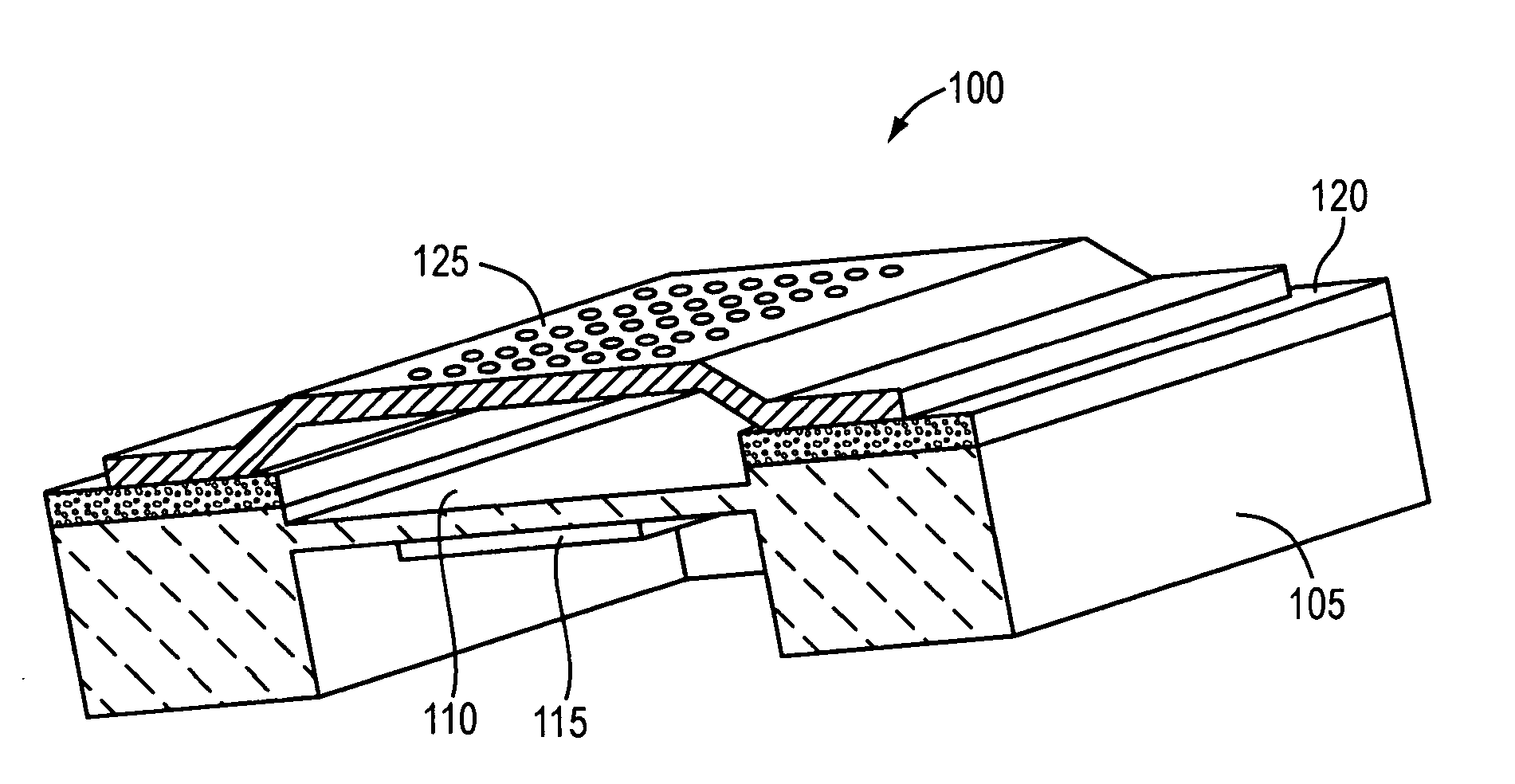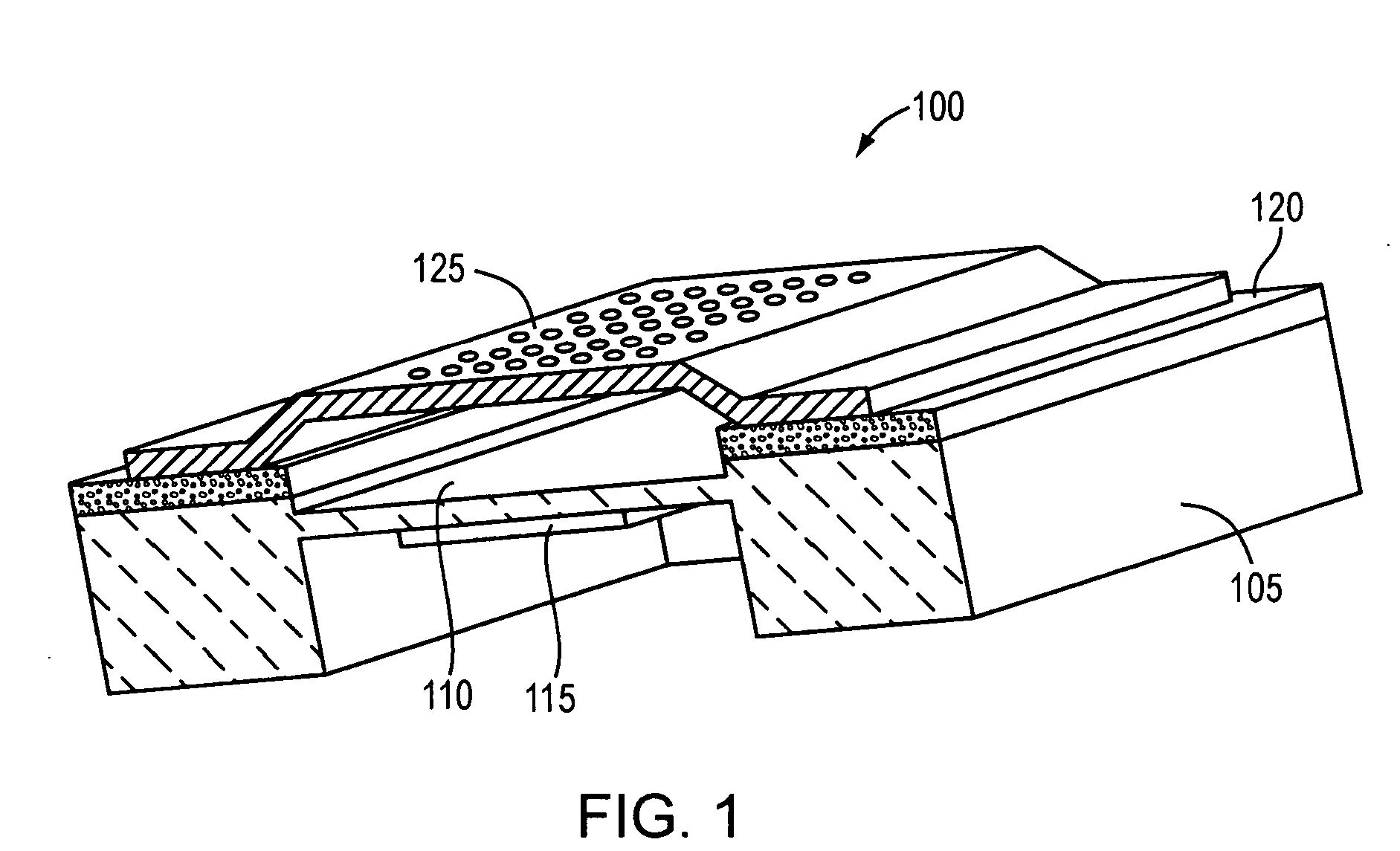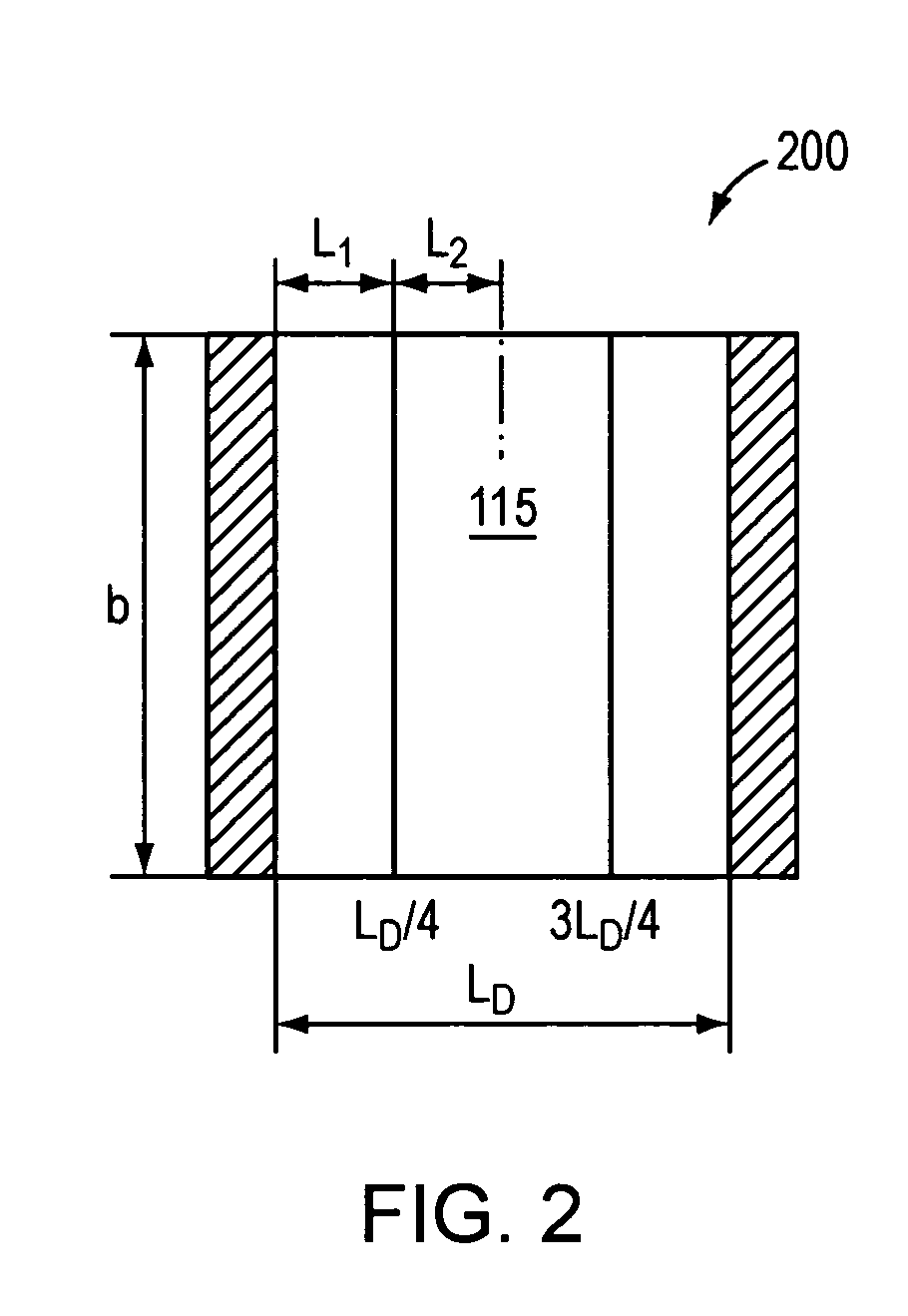Stress-based electrostatic monitoring of chemical reactions and binding
a technology of electrostatic monitoring and chemical reaction, applied in the field of measuring instruments, can solve the problems of stress deflecting diaphragm, change in the size of the gap between the diaphragm and the counter electrode, etc., and achieve the effect of enhancing differentiation and quantitative measurement, and small device siz
- Summary
- Abstract
- Description
- Claims
- Application Information
AI Technical Summary
Benefits of technology
Problems solved by technology
Method used
Image
Examples
Embodiment Construction
[0025] With reference to FIG. 1, a representative measurement device 100 in accordance with the invention comprises a fixture or substrate 105, which secures the edges of a conductive diaphragm 110. The diaphragm may be circular, rectangular (as illustrated), or other shape. (As used herein, the term “conductive” means electrically conductive or semiconductive, as those terms are understood in the art.) A selective coating 115, described in greater detail below, is applied to the bottom face of diaphragm 110. Since the diaphragm 110 and its support by the substrate 105 are continuous, coating 115 resides within a cavity formed by the substrate.
[0026] An insulating layer 120 (e.g., a coating of rubber or plastic, or an oxide) is provided on a top surface of substrate 105. A counter electrode 125 is secured to the insulating layer 120 in opposition to diaphragm 110, thereby forming a gap between the diaphragm and the counter electrode.
[0027] It is generally important to maintain equ...
PUM
| Property | Measurement | Unit |
|---|---|---|
| Pressure | aaaaa | aaaaa |
| Concentration | aaaaa | aaaaa |
| Electrical conductor | aaaaa | aaaaa |
Abstract
Description
Claims
Application Information
 Login to View More
Login to View More - R&D
- Intellectual Property
- Life Sciences
- Materials
- Tech Scout
- Unparalleled Data Quality
- Higher Quality Content
- 60% Fewer Hallucinations
Browse by: Latest US Patents, China's latest patents, Technical Efficacy Thesaurus, Application Domain, Technology Topic, Popular Technical Reports.
© 2025 PatSnap. All rights reserved.Legal|Privacy policy|Modern Slavery Act Transparency Statement|Sitemap|About US| Contact US: help@patsnap.com



